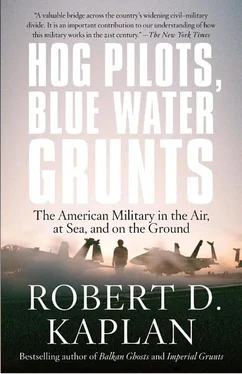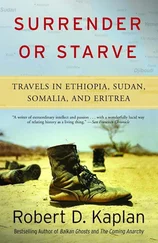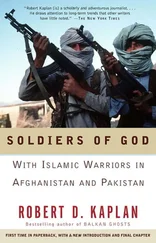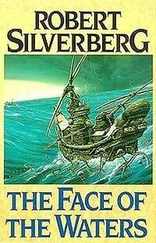The Niger was no less remote to twenty-first-century Americans than it had been to the ancient Greeks. It passed through some of the poorest and most unstable countries in the world. The Sahara Desert had effectively cut West Africa off from the traffic of peoples, ideas, and technology that moved between the Mediterranean and Eurasia from the classical age onward. Islam itself was weakened in the course of its arduous journey south. The Tuaregs, for example, a Berber people who began moving south from the central Sahara to the Niger River about A.D. 1000, were only nominally Muslim. They built few mosques; few of them made the haj to Mecca. Tuareg men wore veils; not Tuareg women. The word “Tuareg” itself is Arabic for “the abandoned of God.” The flowing robes and headdresses of Tuareg warriors recalled not Muslims but medieval Christian knights. 3
A Tuareg empire grew up around the caravan city of Agadez, only to be conquered by the empire of Songhai. The empires of Songhai and Mali later overlapped near the middle part of the Niger River, the part with which Ibn Battuta was familiar, and where U.S. Marines had recently ensconced themselves.
These medieval imperiums had raised impressive armies and bureaucracies, with their names enduring through the ethnic identities of the inhabitants. Yet given the sleepy underdevelopment that now defined the region, such mighty kingdoms might as well have been ghosts.
By 1900, the French had conquered much of the Sahara and adjacent Sahel. But as other imperial powers had learned and were still to learn, conquest came easily; remolding a difficult terrain in one’s image was another matter. The Tuaregs, as though precursors of modern-day Islamic terrorists, faded into the landscape and waited out the occupiers. 4A century later it would be the region’s political and social failure that raised its stature in the eyes of the American military.
Throughout the Sahel were the ingredients that bred terrorists and their sympathizers: large populations of unemployed young men, growing political disaffection, and increasing Islamic orthodoxy. 5At each end of the Niger were bustling ports with questionable security, coastlines teeming with pirates, and Arab émigré communities with links to international diamond smugglers and terrorist outfits. Sahelian Africa had the two requirements essential for penetration by al-Qaeda and its offshoots: collapsing institutions and cultural access afforded by an Islamic setting.
The Salafist Group for Preaching and Combat, which boasted links to al-Qaeda, had amassed weapons and vehicles in Mali for use in Algeria. With the help of U.S. Navy surveillance aircraft, it was pushed out of Mali into Niger and Chad, where U.S. Army Special Forces helped Chadian troops kill and capture over forty insurgents. 6Still, the Salafists were arguably the most dynamic Islamic force in the northern half of Africa. In Algeria they had eclipsed the Armed Islamic Group as the leading threat to the government. Too, they were active along the Libyan-Chadian border. Though founded in 1998 in Algeria, the Salafists traced their ideological roots to the reform movements in nineteenth-century Egypt that had raised the level of political consciousness among Muslims, then mired in antique and decaying colonial systems. 7This venerable Salafist legacy lent cachet to al-Qaeda extremism.
Big Oil also lured the United States to the region. In 2004 the U.S. was importing 15 percent of its oil from West Africa, a figure expected to rise to 25 percent within a decade. 8There was, too, the rising specter of the Chinese, who were investing significantly in the Sahel and whose influence the Americans wanted to limit.
Given such circumstances, the U.S. military had dispatched Army Special Forces to Mali and Mauritania, and marines to Chad and Niger. Senegal and other countries would soon be added to the pan-Sahel initiative, designed as a preventive, economy-of-force measure to avert the need for a massive deployment against terrorists as in Afghanistan.
———
I planned to meet up with U.S. marines in Niger, the second poorest country in the world after Sierra Leone. Yet my first impression of Niger was one of august, primordial beauty. The great river did not disappoint: a vast, smoky engraving so wide that it seemed less an actual river than a still life of the sea itself. In the middle, majestically parting the waters, stood long sandbars topped by rich green grass at the beginning of the rainy season. Thickets of coconut palms, neem, and eucalyptus lined the banks, beyond which stretched panels of cultivation that culminated in a series of low mesas. Camels plodded back from the fields at dusk, approaching the bronzed water where gurgling hippos bathed and men in shallow-draft boats fished for perch.
The capital city of Niamey, which unrolled along the river’s northern bank, was little more than a sprawling village: absent of tension compared to the teeming African slum cities by the Atlantic Ocean to the south, such as Lagos and Abidjan. Parallel to the river were tranquil streets with stoplights that actually worked, and one-story government buildings with few guards at the entrances. The loose laterite gave the entire townscape a rich orange tint, as though a camera filter had been placed before one’s eyes.
There were mud-walled houses and tulip-shaped wattle roofs. Boys stricken with polio went by on makeshift bicycles that they operated with hand pedals. Women in loud robes, buckets atop their heads, appeared almost to float by. There was an affecting, sensual intimacy to these dusty orange lanes. I thought of how the cities of coastal West Africa must have looked decades ago, before massive urban migration had shredded kinship patterns, ignited ethnic strife, and substituted the pageant of earthen colors for the prison hues of iron and concrete. Yet despite a spate of violent crime in parts of town and periodic anti-Christian riots near the Nigerian border, Niger’s relatively slow pattern of development had caused it to lack an explosive edge. The traditional class structure of nobles, artisans, and former slaves still survived, leading to unspoken understandings that braced the social mortar.
But Niamey worked better as a city than it did as the administrative center of a country so vast and empty that the Libyan border to the northeast was farther away from the Nigerien capital than the Great Lakes were from the Gulf of Mexico. Seventy-five percent of Niger’s twelve million people lived on just a sliver of territory stretching from Niamey eastward, along the Benin and Nigerian borders. Alas, Niger was little more than a demographic spillover of Nigeria, even as Niger’s governing class, composed mainly of ethnic Hausas and Songhai-Djermas, had to control a hostile desert extending to Mali, Algeria, Libya, and Chad—a desert where Tuareg bandits were providing sanctuary and logistical support to Islamic terrorists. Niamey was pleasant, even as it was a vacuum surrounded by unstable regional forces.
The U.S. military had the same impossible task here as it had in so many other places where it was deployed: against considerable odds, help make a country that existed only on the map into something real. I stress the military because in weak democracies such as Niger’s, politicians came and went, but soldiers and security men remained as silent, behind-the-scenes props—if they hadn’t metamorphosed into politicians themselves. Niger’s civilian head of state, Tandja Mamadou, was a former army lieutenant colonel. The fact that the State Department constituted the front for security assistance missions like that of the Marines did not mask European Command’s importance to Niger. The Pentagon’s humanitarian assistance projects, administered at the time by European Command (EUCOM) through a defense attaché at the U.S. Embassy in Niamey, accounted for almost all of the charity relief that the American people provided to the troubled north of Niger. Northern Niger was too insecure for either the Peace Corps or nongovernmental organizations to penetrate. You couldn’t establish yourself in the north without the help of the Nigerien military, with whom civilian aid workers had cultivated few, if any, contacts.
Читать дальше












